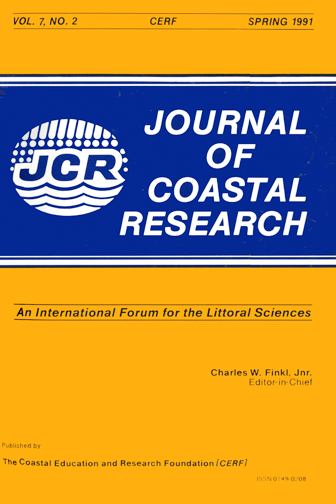Clay Mineralogy and the Recent Evolution of the North Central Nile Delta, Egypt
Keywords:
Egyptian coast, mud-rich deposits, Nile delta clays, paleoclimates, paleogeographic evolution, radiocarbon-dated coresAbstract
This investigation evaluates the clay mineral composition in mud-rich deposits in radiocarbondated cores recovered in the north-central Nile delta, Egypt. Focus is on variations in composition in time (during the past 30,000 years) and space, primarily in the region between the Rosetta and Damietta branches of the Nile. This region constitutes essentially one clay mineral province during both the late Pleistocene and the Holocene. The north-central sector differs from the northeastern Nile delta in that it comprises relatively enhanced proportions of kaolinite and decreased proportions of smectite. With regards to the late Pleistocene, the data suggest that the River Nile system transported northward relatively higher proportions of kaolinite than does the present River Nile, largely as a function of different paleoclimatic conditions which altered input of sediment from the different Nile headwater sources in East Africa. Deposition of increased proportions of kaolinite in the study area during the Holocene probably is a function of selective transport of this clay mineral which has a relatively larger particle size: the River Nile has released its kaolinite-enriched load near the coast in environments such as lagoons which have characterized much of the study area during the past 7500 years. Smaller smectite particles probably by-passed the cored area and were deposited further seaward in delta lobes accumulating on what is now the submerged continental shelf. This clay mineral study supports the contention that the north-central delta has undergone less subsidence and, in consequence, has been subjected to less marine influence than the northeastern Nile delta during the late Quaternary.


